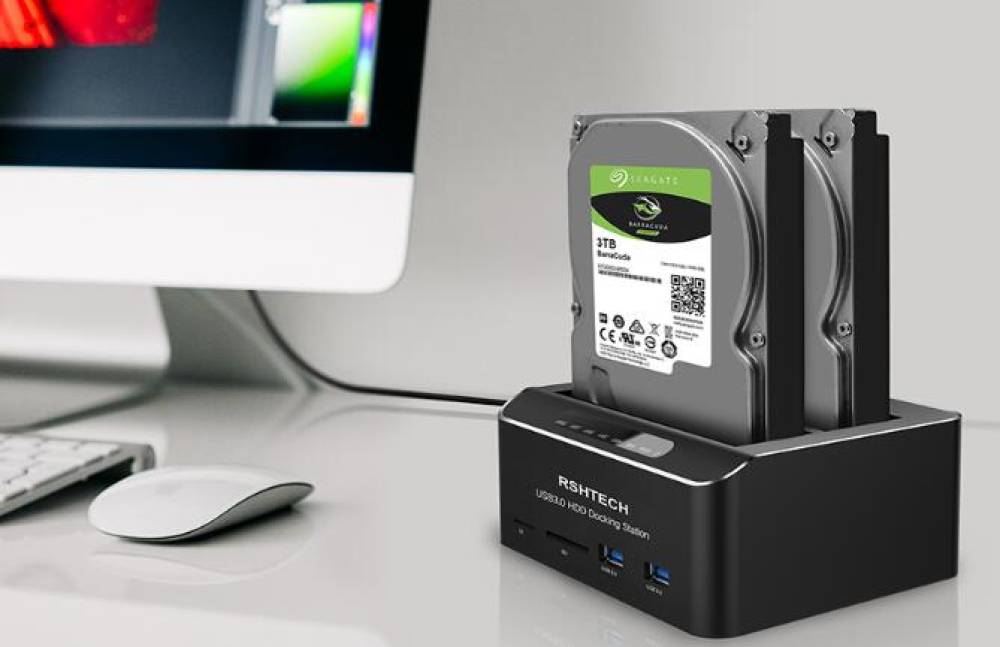Fixing a corrupted external hard drive without formatting is possible in many cases, and it mainly involves using system tools, third-party software, and some manual repair methods.
Use Built-in System Tools
For Windows
Run CHKDSK: The Check Disk (CHKDSK) tool in Windows can scan and repair file system errors on the external hard drive. Connect the external hard drive to your Windows computer. Open the Command Prompt as an administrator. Type chkdsk X: /f (replace X with the drive letter of your external hard drive) and press Enter. This command will check the disk for errors and attempt to fix them. The /f parameter tells CHKDSK to fix any errors it finds.
Use System File Checker: The System File Checker (SFC) is another useful tool in Windows. It can scan for and restore corrupted system files that may be causing issues with the external hard drive. Open the Command Prompt as an administrator and type sfc /scannow. This command will scan all protected system files and replace corrupted files with a cached copy that is located in a compressed folder on the computer.

For Mac
Use Disk Utility: Mac's Disk Utility is a powerful tool for managing and repairing disks. Connect the external hard drive to your Mac. Open Disk Utility, which can be found in the Applications > Utilities folder. Select the external hard drive in the list on the left. Click the "First Aid" button. Disk Utility will then scan the disk for errors and repair any problems it finds.
Employ Third-Party Software
Drecov Data Recovery is a reliable software solution designed to recover lost or deleted files from various storage devices. Whether you've accidentally deleted important documents, photos, or videos, or if your external hard drive or memory card has been formatted, Drecov Data Recovery offers an easy way to restore your data without hassle.
Key Features of Drecov Data Recovery:
Comprehensive Recovery: It supports recovering documents, photos, videos, music, and more, from a wide range of storage devices like hard drives, USB drives, memory cards, and external drives.
Fast and Deep Scan Modes: Whether you're looking for a quick recovery or need to scan deeper for older lost files, Drecov Data Recovery offers both options.
Preview Before Recovery: This feature allows you to preview recoverable files to ensure that the data you need is available before restoring it.
Intuitive Interface: The software is user-friendly, making it suitable for both beginners and experienced users.
Multiple File Systems Supported: It works with NTFS, FAT32. exFAT, HFS+, and other file systems commonly used in personal and professional storage devices.
Check and Repair the Physical Connection
Examine the Cable: Inspect the USB cable or other connection cables for any signs of damage, such as frayed wires or bent connectors. If the cable is damaged, replace it with a new one and see if the external hard drive works properly. Sometimes, a faulty cable can cause data transfer issues that may appear as drive corruption.
Clean the Connectors: Dust and dirt can accumulate on the connectors of the external hard drive and the computer, causing poor contact. Use a soft, dry cloth to gently clean the connectors on both the hard drive and the computer. If there is stubborn dirt, you can use a small amount of isopropyl alcohol on a cotton swab to clean the connectors, but make sure to let them dry completely before reconnecting.
Try a Different Port: Connect the external hard drive to a different USB port or other appropriate ports on your computer. Sometimes, a specific port may be malfunctioning, and switching to another port can solve the problem. If possible, try both USB 2.0 and USB 3.0 ports to see if there is a difference.
Check for Firmware Updates
For Windows: Manufacturers often release firmware updates for external hard drives to improve performance and fix bugs that may cause corruption issues. Visit the manufacturer's website and look for the support section. Find your specific model of the external hard drive and check if there are any available firmware updates. Follow the manufacturer's instructions to download and install the update.
For Mac: Similar to Windows, Mac users should visit the manufacturer's website to check for firmware updates. Make sure to download the correct update for your Mac's operating system version and the specific model of the external hard drive.
Manually Repair the File System (Advanced Users)
For Windows: If the built-in tools do not work, advanced users can try using the Registry Editor to repair the file system. However, this method is risky and should be done with caution. Open the Registry Editor by pressing the Windows key + R, typing "regedit", and pressing Enter. Navigate to the following key: HKEY_LOCAL_MACHINE\SYSTEM\CurrentControlSet\Control\FileSystem. Look for values related to the external hard drive and check for any incorrect or corrupted entries. Make sure to backup the registry before making any changes.
For Mac: Mac users can use the Terminal to perform some advanced file system repairs. For example, the fsck command can be used to check and repair the file system. Open the Terminal and type sudo fsck -fy /dev/diskX (replace X with the correct disk number of your external hard drive). The sudo command is used to run the command with administrative privileges, and the -fy parameters tell fsck to perform a full check and repair any errors automatically.




